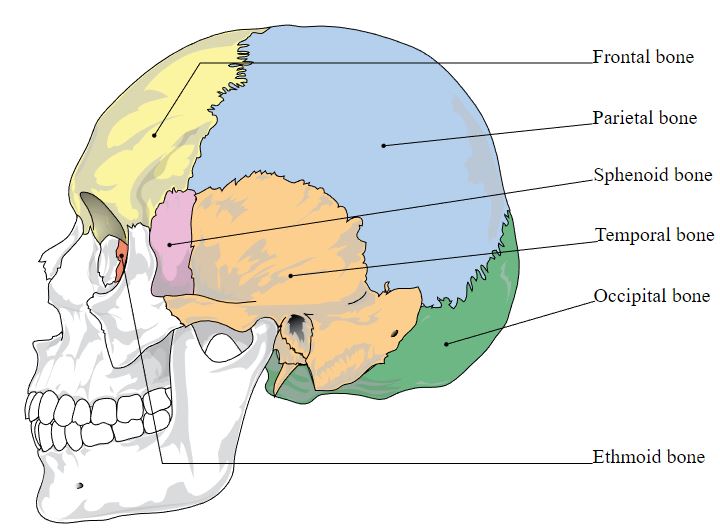
With any damage to the skull, there is a high probability of a traumatic brain injury. The most severe complication of a basilar skull fracture is death. Possible Complications of Basilar Skull Fractures Some symptoms of basilar skull fractures may including bleeding from the site of the wound, or through the ears, nose, or eyes, bruising behind the ears or under the eyes, changes in the size of pupils, confusions, convulsions, drowsiness, headaches, nausea, restlessness, slurred speech, neck stiffness, and vomiting. Injuries may occur with or without loss of consciousness, and in some cases, the only symptom may be a bump on the head. Head injury and skull fracture symptoms may vary. Skull Fracture Symptoms & Clinical Manifestations Surgery is usually not necessary unless other injuries are involved, such as intracranial bleeding. Because of the high risk of meningitis and possible nerve damage associated with basilar skull fractures, most people with basilar skull fractures are admitted to the hospital for observation and treatment. This type of skull fracture is relatively rare and only occurs in about 4% of head injuries. Compared with otic capsule sparing fractures, patients with otic capsule violating fractures were approximately two times more likely to develop facial paralysis, four times more likely to develop CSF leak, and seven times more likely to experience profound hearing loss, as well as more likely to sustain intracranial complications including epidural hematoma and subarachnoid hemorrhage.ĬONCLUSION: The use of a classification system for temporal bone fractures that emphasizes violation or lack of violation of the otic capsule seems to offer the advantage of radiographic utility and stratification of clinical severity, including severity of Glasgow Coma Scale scores and intracranial complications such as subarachnoid hemorrhage and epidural hematoma.A fracture at the base of the skull is known as a basilar skull fracture. By using the otic capsule violating versus sparing designation, an important difference in clinical sequelae and intracranial complications became apparent. 80%, respectively) was unable to be determined in this group therefore, clinical correlation to complications using that paradigm was not possible. The classic characterization of transverse versus longitudinal fracture (20% vs. Ninety (3%) patients sustained a temporal bone fracture.

RESULTS: A total of 2,977 patients were treated at the trauma center during this time. Clinical and radiographic records were evaluated by using the two classification schemes. Patients identified as sustaining closed head injury were reviewed for basilar skull fracture and temporal bone fracture. METHODS: The University of Massachusetts Medical Center Trauma Registry was reviewed for the years 1995 to 1997. otic capsule violating fracture) is practical from a clinical and radiographic standpoint.

longitudinal) in the modern Level I trauma setting and to determine whether a newer system of designation (otic capsule sparing vs. OBJECTIVE: To assess the practicality and utility of the traditional classification system for temporal bone fracture (transverse vs. Temporal Bone Fractures: Otic Capsule Sparing versus Otic Capsule Violating Clinical and Radiographic Considerations Abstract


 0 kommentar(er)
0 kommentar(er)
